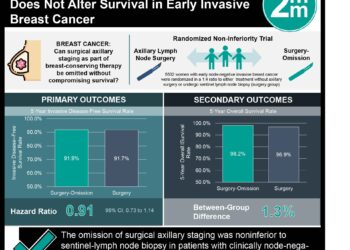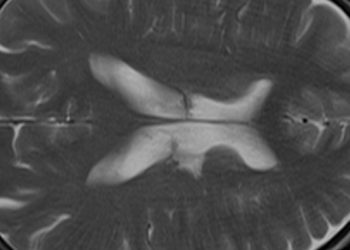2 Minute Medicine Rewind July 10, 2023
Daily low-volume paracentesis and Clinical Complications in Patients with Refractory Ascites
1. For patients with refractory ascites, daily home-based low-volume paracentesis was associated with a greater risk of hyponatremia and acute kidney injury compared to repeated large-volume paracentesis.
Evidence Rating Level: 3 (Average)
Refractory ascites is a clinical sign of end-stage liver disease, with few effective treatment options. Most patients will undergo repeated large-volume paracentesis (LVP) with albumin infusions. Home-based small-volume paracentesis is becoming more common, though previous research suggests there may be increased risks of AKI, hyponatremia, and hospital admissions with this practice. This retrospective cohort study aimed to examine the incidence of complications associated with daily small-volume drainage. 250 patients with refractory ascites were followed for 90 days. Only patients with contraindications to transjugular intrahepatic portosystemic shunt were included in the study. 72% of patients underwent daily small-volume drainage (minimum 1.5 L/ day) and 28% received repeated LVPs. The study endpoints were a 90-day incidence of hyponatremia and AKI. Compared to repeated LVPs, daily drainage was associated with an increased risk of hyponatremia (HR, 2.17; 95% CI, 1.24-3.78; P = .006) and AKI (HR, 1.43; 95% CI, 1.01-2.16; P = .04). There was no increased risk found for patients draining less than 1.5 L/ day. This study suggests that clinicians should be cautious of advising at-home drainage exceeding 1.5L/ day without albumin infusions. This study is mainly limited by the small sample size and the retrospective research design. To more accurately determine the risks associated with different drainage methods, future research may expand on this data by recruiting a larger study population or adopting a prospective or randomized control trial design. Nonetheless, study findings suggest that there are likely ongoing complications associated with home-based low-volume paracentesis that may inhibit it from being a viable therapeutic option for some patients.
Trends in Rates of Opioid Agonist Treatment and Opioid-Related Deaths for Youths in Ontario, Canada, 2013-2021
1. Rates of opioid-related deaths were rising among youths in Ontario, while use of opioid agonist therapy declined.
Evidence Rating Level: 2 (Good)
The incidence of opioid-related mortality has been increasing among youths in North America. Opioid agonist treatment (OAT) is an evidence-based method shown to reduce opioid-related deaths. Barriers to OAT, including stigma and poor accessibility, reduce the uptake of this treatment. The aim of this cross-sectional study was to assess the rates of OAT and opioid-related mortality in Ontario, Canada among two age groups: 15-24 and 25-44 between 2013 and 2021. Data were collected from the Ontario Drug Policy Research Network, Public Health Ontario, and Statistics Canada. Between 2013 and 2021, opioid-related deaths in the younger cohort increased 369.2%, from 2.6 to 12.2 per 100,000 population. OAT use decreased by 55.9%, from 3.4 to 1.5 per 1000 population. Among the older cohort, opioid-related deaths increased 371.8%, from 7.8 to 36.8 per 100 000, and OAT use increased 27.8%, from 7.9 to 10.1 per 1000 population. This study suggests that while opioid-related mortality is increasing for both youths and adults in Ontario, youths are simultaneously reducing their use of OAT. Further research can examine barriers to accessing OAT in younger populations. Clinicians can work together with Public Health Agencies to increase accessibility and utilization of OAT in this younger demographic, such as by engaging with schools or increasing the use of technology for outreach.
1. Varenicline, in addition to counseling, increased e-cigarette cessation at 12 and 24 weeks compared to counseling alone.
Evidence Rating Level: 2 (Good)
There are currently no evidence-based recommendations to guide e-cigarette (EC) cessation. Given that EC use is increasing worldwide, the number of patients turning to clinicians for guidance on cessation is likely to increase. Researchers aimed to evaluate the effectiveness of varenicline for EC cessation. 140 participants interested in EC cessation were randomized into two groups. One group received 1 mg varenicline twice per week for 12 weeks, in addition to counseling. The second group received a placebo treatment twice weekly for 12 weeks, in addition to counseling. Participants were followed for an additional 12 weeks after the end of treatment. The primary study endpoint was abstinence from weeks 4-12. They also assessed continued abstinence during the follow-up period. Continuous abstinence was significantly higher in the varenicline group compared to placebo at weeks 4-12 (OR, 2.67; 95% CI, 1.25–5.68; P=0.011) and weeks 4-24 (O,R,2.52; 95% CI, 1.14–5.58; P=0.0224). This randomized control trial indicates that including varenicline as part of an EC cessation plan may improve abstinence. This study may be helpful to guide clinicians counseling patients on EC cessation. Limitations of the study include the small sample size and short follow-up period. Future research may assess whether varenicline is beneficial for long-term EC cessation. It also remains to be determined whether varenicline alone, without counseling, is beneficial for EC cessation. Nonetheless, study results may reflect a novel research field investigating viable evidence-based recommendations for e-cigarette smoking cessation.
1. In a cohort of young participants, dobutamine stress tests were found to reduce cerebral blood flow on magnetic resonance angiography.
Evidence Rating Level: 3 (Average)
Dobutamine is a sympathomimetic medication used in echocardiography and the acute care of congestive heart failure. Previous research has not established whether this medication impacts cerebral blood flow (CBF). This self-controlled study included 48 participants, aged 23 to 34 years, all non-smokers, with no previous cardiovascular or cerebrovascular disease. Magnetic resonance angiography (MRA) with 3D pseudo-continuous arterial spin labeling was used to assess CBF before and during a dobutamine stress test. MRA results were independently assessed by two radiologists. Compared to the resting state, CBF was significantly lower in both gray and white matter during the stress test, particularly in the anterior circulation (voxel level P<0.001, pixel level P<0.05). Factors associated with a greater reduction in cerebral blood flow during the test included high BMI (OR, 5.80; 95% CI, 1.60–21.01; P=0.008) and lower systolic blood pressure (SBP) (OR, 0.64; 95% CI, 0.45–0.92; P=0.014). This study determined that dobutamine-induced stress decreased CBF, particularly in the anterior brain of those with higher BMIs and low SBP. Given that the study only included young, healthy adults, the results cannot be generalized to a broader population. Further research is needed to determine whether dobutamine impacts CBF when used for patients who are older or those with chronic conditions, including congestive heart failure.
1. Combination therapy with gemcitabine and docetaxel for patients with metastatic or locally advanced synovial sarcoma met the primary endpoint of 3-month progression-free survival.
Evidence Rating Level: 3 (Average)
Synovial sarcoma (SS) accounts for 5-10% of all soft tissue sarcomas. SS carries a high risk for local recurrence and metastasis. The median 5-year overall survival of metastatic SS is only 10%. Anthracyclines are the standard of first-line care advanced SS. Combination therapy with gemcitabine and docetaxel has not been prospectively studied. Researchers aimed to assess the efficacy, tolerability, and quality of life of this combination therapy for patients with metastatic or unresectable locally advanced SS. Twenty-two participants between the ages of 15 and 60 (median age 32) were enrolled for a single-arm, two-stage, phase II study. 18 participants had metastatic disease, and 4 had locally advanced, unresectable disease. All participants had previously attempted treatment with one line of medical therapy. The chemotherapy regimen for this study included IV gemcitabine 900 mg/m2 on days 1 and 8 and IV docetaxel 75 mg/m2 on day 8 every 21 days. Participants underwent 2-6 cycles, with a median of 4 cycles. The median progression-free survival (PFS) was 3 months (95% CI, 2.3–3.6). 10 patients were progression-free at the end of the study period. Median overall survival was 14 months (95% CI, 8.9–19.0). Between weeks 0 and 12 of the study, participants reported significantly worsened quality of life on both functional and symptom scales. 7 patients developed severe toxicities, including anemia (18%), neutropenia (9%), and mucositis (9%). This study is limited by the single-arm approach. As well, researchers experienced poor participant accrual, leading to a small sample size. Overall, this study demonstrates the potential for combination therapy with Gemcitabine and Docetaxel for patients with metastatic or locally advanced SS, though further research is needed to study this regimen in a larger cohort.
Image: PD
©2023 2 Minute Medicine, Inc. All rights reserved. No works may be reproduced without expressed written consent from 2 Minute Medicine, Inc. Inquire about licensing here. No article should be construed as medical advice and is not intended as such by the authors or by 2 Minute Medicine, Inc.







